This week, we had the honor to Dr Brian Moore, the CEO of Orreco, a leading Sports & Data Science Platform, which is blending Data Science and Sports Science to generate customized indicators of injury risk, optimal training load and recovery strategies.
Orreco also recently launched a new app called @thlete tailored for athletes that helps them analyze their sleep, nutrition, load and much more.
Picture: Orreco’s new app.
From rookie players to veteran pros, they help elite athletes tolerate the physical demands of the professional leagues, accelerate recovery and extend playing careers. They use biomarkers, blood analysis, and data science to identify an athlete’s individual thresholds and provide personalized strategies to keep athletes in their peak performance zones. Orreco works with Olympians, Global governing bodies, NBA, NFL and NHL franchises, English Premier League teams, WNBA players, PGA Tour golfers and F1 drivers.
Here is a video on Orreco’s solution:
Video: Orreco
?Show Notes: Throughout this interview, we touched on Brian’s background, the company Orreco he co-founded with hematologist Dr Andy Hodgson and the work they are doing with teams and athletes. We also discussed his products and the benefits for teams and athletes to use it, and his vision of the sports science space. Then we talked about the work his company is doing in the NFT space and his plans for the next 12 months.
Best Quotes: Here are some of the key discussion points and best quotes from our conversation with Brian:
On his background:
- “I was one of the final PhDs to complete their studies under Professor Craig Sharp, founder of the British Olympic Medical Center and the British Association of Sports Science. And any folks listening in the UK or even internationally would be maybe familiar with Craig. He was an amazing professor, and he was one of the founding members of the sports science movement in the UK who drove a lot of the processes and he gave us the opportunity. So any of the work that we are doing really feels like we’re standing on the shoulders of giants who did all the early and amazing work for us. And our work is an evolution and extension of that”.
- “There’s an amazing article that Craig wrote in 1996, talking about the sub 24 minute 10K race in the year 2040. And he described how he foresaw sports technology to be able to support someone running six, four minute miles back to back. And if you look at it it’s amazing. So much of it has come through from the speed suits that Cathy Freeman wore at the Sydney Olympics, the new shoes with the carbon fiber plates, the electronic placing with the lights, the micronutrition, it’s all there really. And he built a roadmap for us to look at. And I always refer to him and his roadmap. Here is Prof Sharp’s article https://bjsm.bmj.com/content/bjsports/30/2/181.full.pdf”.
- “I’m immensely grateful to Craig for giving me the opportunity as a young undergraduate and going to him with an idea about monitoring the blood of athletes and how it can potentially help coaches and the performance staff in guiding training and especially when it comes to overtraining and under recovery”.
- “So that’s really where it all started for me. I did my undergraduate in Strawberry Hill in London and then I was exposed and trained with amazing athletes like Moses Kiptanui, Daniel Komen and Sally Barsosio”.
On how he got the idea to start Orreco:
- “I had a very simple idea which was: is the blood in an athlete different than the blood of a non-athlete? And I stumbled across really interesting findings that identified when players were fatigued and at other times when they were hurt. And it was all linking back to inflammation that we were starting to see and some early signs of it, and their maladaptation to load where their immune system was being compromised. And I remember the time when I was running and training hard with the Kenyans and I felt absolutely awful. I was being absolutely smashed every other day, and I just remember running my own blood through the machine and thinking, “If this comes up as normal, and if it is not really showing me anything when I felt so bad, I might quit my PhD”.
- “It was very interesting when we ran it through and we looked at the laboratory and they said, “Ah, look, see, it’s normal.” And so I started looking at it and I started to see there were definitely disturbances around the white cells count. And then what happened? Both my parents were biomedical scientists, and to be honest, it’s the last thing in the world I wanted to do, Julien, because I was just interested in sports. And really what I started to see was that from the back of the analyzers, there were hundreds of parameters that you rarely saw”.
- “Then what we started to work on was our point of care. And that’s a natural evolution of what we’re doing today where they give you a snapshot of looking at your high sensitivity, CRP, your Inflammation levels and your antioxidant defenses and free radicals. And we can get a snapshot of the player within six minutes. So we worked with Dr. Paul Catterson at Newcastle, and we started with Paul in 2012, around the time of the Olympics and the Euros. He had players coming back from the Euros who were normal on a lot of measurements, but they were still feeling fatigued”.
- “That’s where it started. And that’s when I realized that what we needed to do what that we needed some rapid information that needed to be robust, reproducible, and reliable. Waiting two, three, four days for a blood report was for me like looking into the past. And then we developed some systems. After that I worked with the British Olympic team across different sports, like sailing, track & field, swimming as I was coming from an endurance background. And then we got to the point where we could have results available from hospital systems within 15 minutes after it hit the laboratory”.
On the benefits of his products for the pro teams and athletes:
- “So within a couple of hours, and now with our point of care we can get the results within minutes. So typically our clients in the Premier League or in the NBA measure the athletes on game day minus two, or plus two. They can use our solution after a recent game or to prepare for the next game. And then we link that together because it is all about the context. Currently there are amazing technologies out there, but it’s not useful if it’s siloed. So what we can do is that we can link this information into the GPS system, and the drill planners into their roadmap or the game schedule. We can link it to an amazing technology like Second Spectrum or connect with data or all the inputs that we’re interested in looking at”.
- Practical recovery monitoring in the EPL . You can check out this article here: https://www.orreco.com/post/monitoring-recovery-in-professional-soccer-and-the-application-of-blood-monitoring
- “So if a player is fatigued, what we can do is we can have integrations with the catapult and STATSports data where we can cross reference the two and you can start to see if a player’s output isn’t where you expect it to be, or if they’re having difficulties with their recovery. You can instantly check on their inflammation levels or their antioxidant defenses and what we’ve seen is that one of the challenges around biomarkers is that oftentimes the data is compared to a standard reference range, but that’s like comparing your player or the athlete to someone in the stands”.
- “But your biomarkers are going to be slightly different than mine. And what we’ve found through all the work over the last 20 years and the last 10 years at Orreco, is that we need to understand the context, and you need to have data that is reliable. You also don’t want to overwhelm the athlete, and you have to be very conscious that the practitioner you’re dealing with has multiple streams of information flying at them with sometimes a smaller analyst team, which means that they’re trying to process a lot of information on the fly and during a training session that might change”.
On their new @thlete app:
- “What we wanted to show is that if you’re sitting with an athlete and your message consistently is and rightly so is, “Increase your fruit and veggie intake, go to bed earlier, and don’t drink beer or reduce your beer. However that gets pretty old pretty quickly”.
- The beauty of Orreco and the Athlete platform is that you can start to see the athletes make the connections themselves when they’re doing everything that they can outside of training and games and recovery, they can see the impact of those positive steps on their performance statistics, and then into their salary. So we can show an athlete week to week, whether they’re performing at above or below contract. And we can show them if they can look ahead for the next seven days or the next two weeks, and look at their travel load, and how many time zones they’re crossing. We can then give suggestions to their private chef at home on what their chef should be preparing for them. Athletes can then see how much better is it when they can come home from training and see that the meal that the chef prepared is actually synced to what they’ve done in training that day and equally what’s programed for them the next day.”
On their feature called Frank (FUTURE RANK) which allows athletes to see if they are performing at or above their contract value and how they can get to the next level:
- It’s a module called Frank that we worked on particularly with Todd Ramasar, an NBA agent so that his athletes can understand where they’re at. What all the athletes want to do is getting better and we want to show them that if they’re on the bench and they want to start, we can show them what kind of outputs are expected for an NBA player. Or if they’re already a starter and they want to be an All-Star or the MVP, we can show them the areas of the game and their physiology, and also what they’re doing on the court, and how they match up against any player in the league”.
- “We’ve built that for the NBA, the NHL, the NFL and the Premier League. And I think it reminds me of what was reported earlier in the year, with Kevin De Bruyne at Manchester City who employed analysts to figure out his contract value”.
On why agents are interested in using their product:
- “Everybody has the same motivation, which is to see their athlete do well. And obviously there’s a financial component for an agent with the commission that they get. And basically the more the player is available the greater his/her salary can be. That can be commanded also on a team level merchandise, sales, TV rights, and it’s all linked to player availability. And a lot of this comes down to that first component. One of those components we talked about is training. And we’ve seen athletes in the past who worked extremely hard and then they picked up an injury”.
- “Predisposition to injuries, the past injuries, and the age of an athlete can be a factor but there are so many factors that go into an injury, which is why it is complex, but agents ultimately want for their players to play as long as possible so they can get paid as much as possible and help them to reach the top of their game. And that’s what they can do through data. And we also have relationships with the players associations because a really critical point of this is that the data belongs to the athlete and it has to be that way”.
- “We have a very good relationship with the NBA players association, and we are in contact with other player agencies as well to say, “Look how you can curate that information for the player and the athletes” So it can also be used when they retire to better manage their own health and wellness. They have this information available to them. And they can see their historical data all in one place. They can see their previous injuries, their historical blood data, et cetera. So that’s one component that the agents are really interested in to maximize their players and their opportunities as well”.
On his platform and how it benefits athletes:
- “For us, the platform is about individualization. So for example here is some information for your chef, or your flight got delayed by four hours last night so what does that mean for your training today? They’re the kind of things that our system can handle and it is built to help them navigate, but we did it from an evidence data-led perspective. And again there is a human in the loop and it’s not a black box algorithm, and players can see what’s driving the inputs for coaches”.
- “So for example, the strength trainer might have done a session in the morning, and with our solution the skills coach might figure out why in the afternoon the player is feeling fatigued and why he is not moving as well as he should. You need that 360 view of the athletes, and that’s what @thlete can do”.
On the issues with some current injury risk assessment solutions that sometimes keep flagging potential injuries of athletes:
- “One of the challenges with some of those injury risk assessment tools is with false positives, which many times materialize as alerts that flag potential injuries but nothing happened. And that’s almost like the parable of boy that cries wolf then it alerts all the time and nothing happens, then when something does happen you can miss it. So really, I think for what we’re starting to see are teams that are often using open source tools. Now there are some great work done in the AMS space to pull the information together, but then the kind of extra layer of intelligence comes from data scientists working along with you”.
- “Because the danger with it is that you can end up modeling in a lot of noise and the data sets that are so vast, in the billions of rows, and as Professor Newell in our team always says, sometimes the more volume the more noise there is. So equally, if there’s bias in there as well, that gets amplified. So for us, it’s about really simple things done very well”.
On his team of 17 PhDs, which is another key differentiator:
- “There are so many data streams (..) there’s the structured data and also the unstructured data. So we had natural language processing modules for coaches’ notes. Basically we had a voice note integration system. It was also linked to the game schedule and the training schedule. But it was really, really complicated and it definitely contributed to the gray hairs that I have now. But I think having guidance from Professor Newell and also Dr. Connorad who specializes in cognitive computing and recommendation systems, it helped us a lot”.
- “And then we built a team of PhDs, sports scientists, like our chief scientist, Dr. Charlie Pedlar. We also hired a PhD in English to help us with the semantic web component”.
On how Orreco fits into the sports tech ecosystem:
- “I think we see ourselves as like an intelligence arm. So if you have an existing AMS provider and you really want to take it to the next level in terms of data science, interrogation of the data, and tackling hard problems, that’s where we come in. And equally, if you want to get started on biomarkers, we’ve got an entry point that can be the point of care component”.
- “And then, if you’re doing your preseason bloods, we can not only just run that analysis or run the bloods for you, but we can also help you make sense of that data and what that means for the players, which then guide their diet and nutrition. So it is a bit like an intelligence that sits behind the systems for you, but it’s bespoke to individuals. But everyone is different, and each team isn’t being shoehorn into a kind of standardized platform and that’s what we can figure out”.
On his view on the NFT/metaverse space and how they play in it:
- “Yeah, I think it’s a brave new world and there are really interesting parallels between the Web2, and then this brave new world of NFTs. We’ve been thinking about it and talking about it for the last three to four years and with the NFTs, we have seen some amazing success with Dapper Labs, Sorare, and companies like DaChain. So we’ve integrated NFTs into our platforms, and we see it as a natural evolution”.
- Through @thlete, each athlete can get their own crypto wallet where digital assets can be created and stored. And then they can be sold onto marketplaces. And we see the NFT where one can click on a player, and it is the NFT of their most recent game. And that’s something that we’re very excited about, but it’s just the start really. It’s ultimately about tokenization and Tokonomics and then curating that data asset and putting the data in format that can be ingested into other models over time. So in our view NFTs are an instant pathway to value creation for an athlete or a team”.
On his plan for the next 12 months:
- “I’ve been doing this for 20 years, but I’ve never been more excited than today. In our platform right now you can do everything from booking a blood test, reviewing your data, checking who you’re going to match up against with, or creating an NFT all in one place. It’s so huge and exciting”.
- “So our plan is to double our team size over the next 12 months, and doubling down on all this innovation that we built and these huge strides forward, and then working with our clients to add the features that they want and that can be aligned with their roadmaps”.
- “We also plan to integrate with more partners. For example we have a relationship with Kinduct, that have a great team with their CEO Travis. This week, we’ve completed our Statsports integration with them, so now it should be visible in their software systems for their clients and customers. We can also integrate with other GPS platforms like Catapult. So it’s basically whatever the elite teams are looking for, we help them build it. And it’s really that value add, that heavy lift of data science that we can provide. And we really enjoy working with them on that aspect”.
- “If anyone wants to reach out to us, hit me up at brian.moore@orreco.com or info@orreco.com, and we’d be delighted to talk to anyone, and thanks to you for creating this amazing community that we’re just honored to be a part of”.
You may also like:
⭐Sports Performance Roles & Best Practices (Head of Performance, Head Athletic Trainer..)
? 2022 Upside Top Sports Tech Predictions (NFT/Metaverse, Sports Performance, IPOs/M&As..)
? ? Upside Analysis: NFTs Vs Crypto Vs Digital Currency, How Are They Different?
? Upside Chat: Dave Hancock, CEO, Apollo (Leading Athlete Management Systems (AMS) vendor)
?Upside Chat: Alexi Pianosi, Strengths and Conditioning Coach, Pittsburgh Penguins (NHL)
?Upside Chat: Pierre Barrieu, High Performance Director, Toronto FC (MLS)

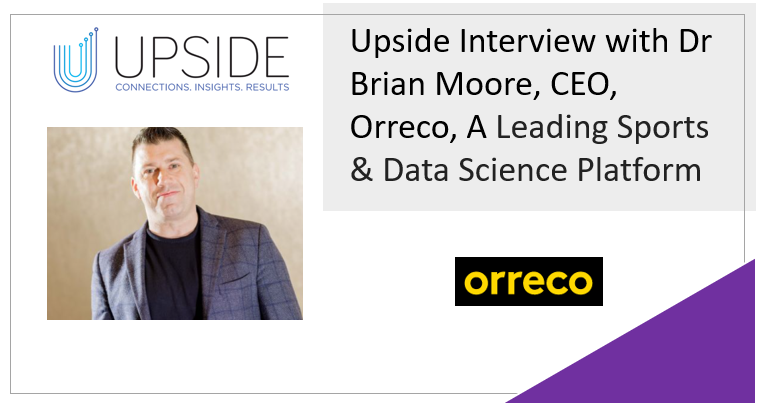

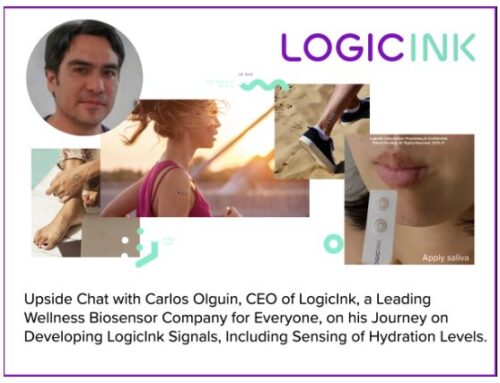
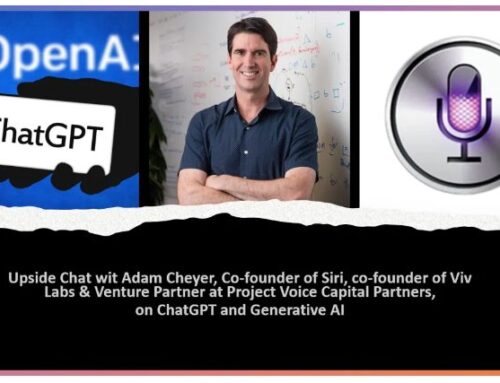
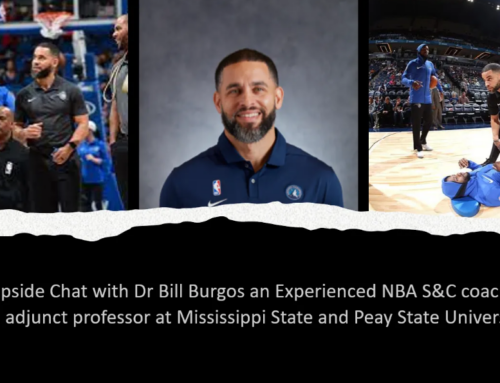
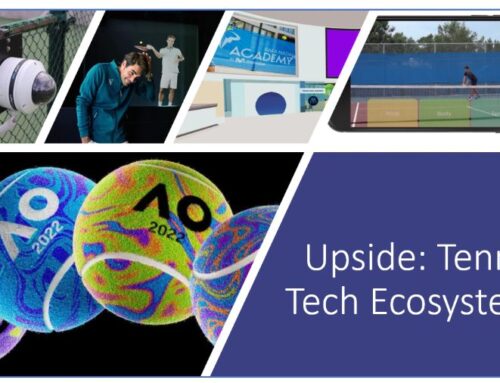
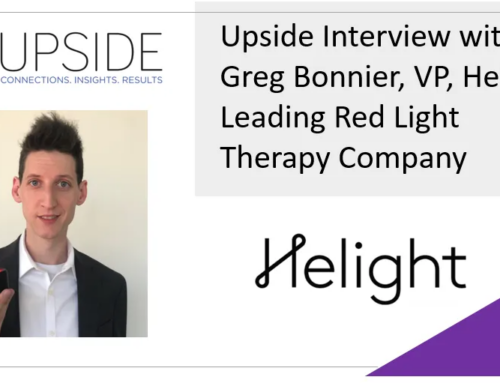
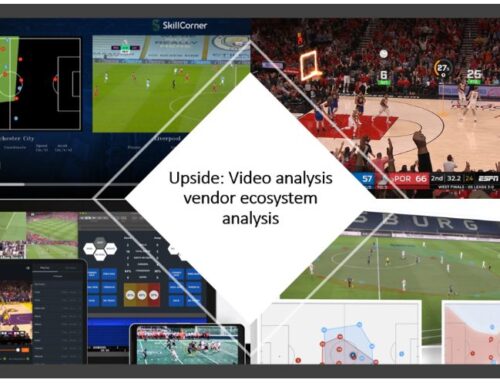
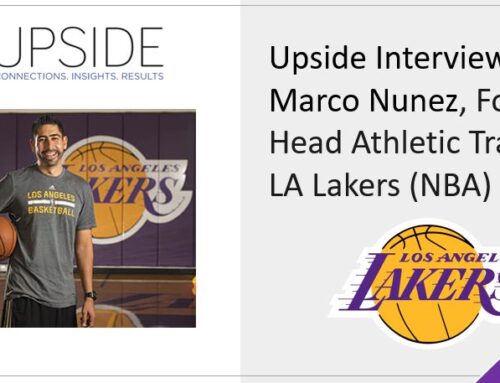
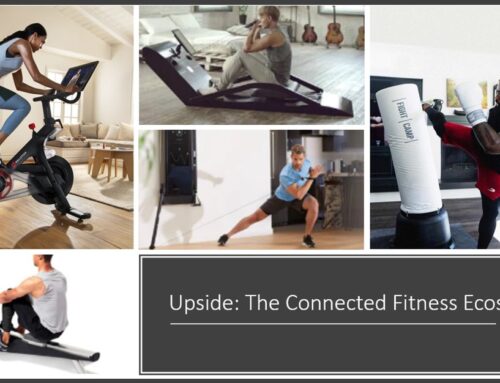


Leave A Comment
You must be logged in to post a comment.